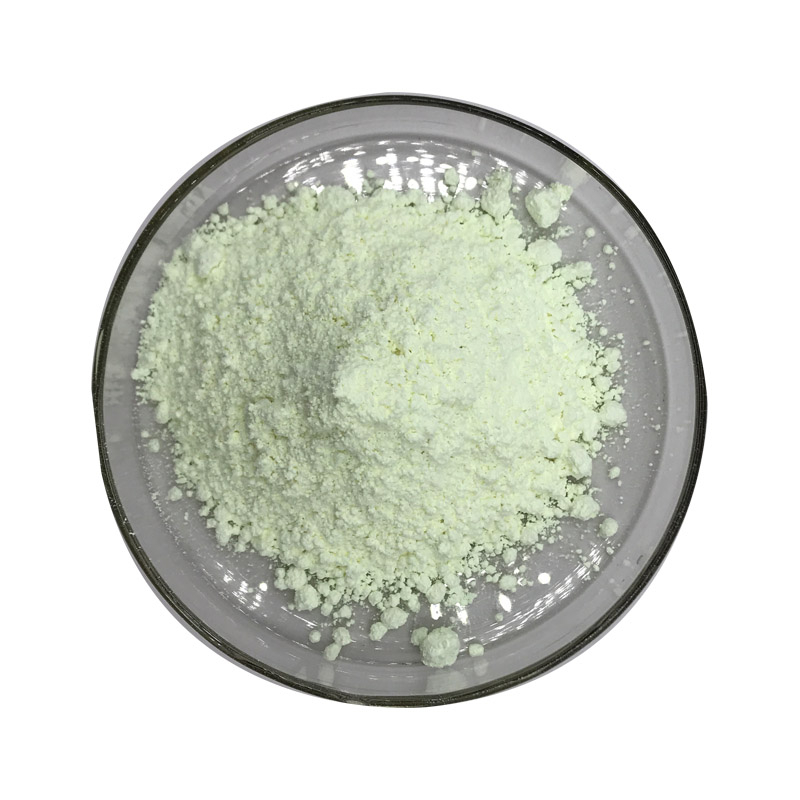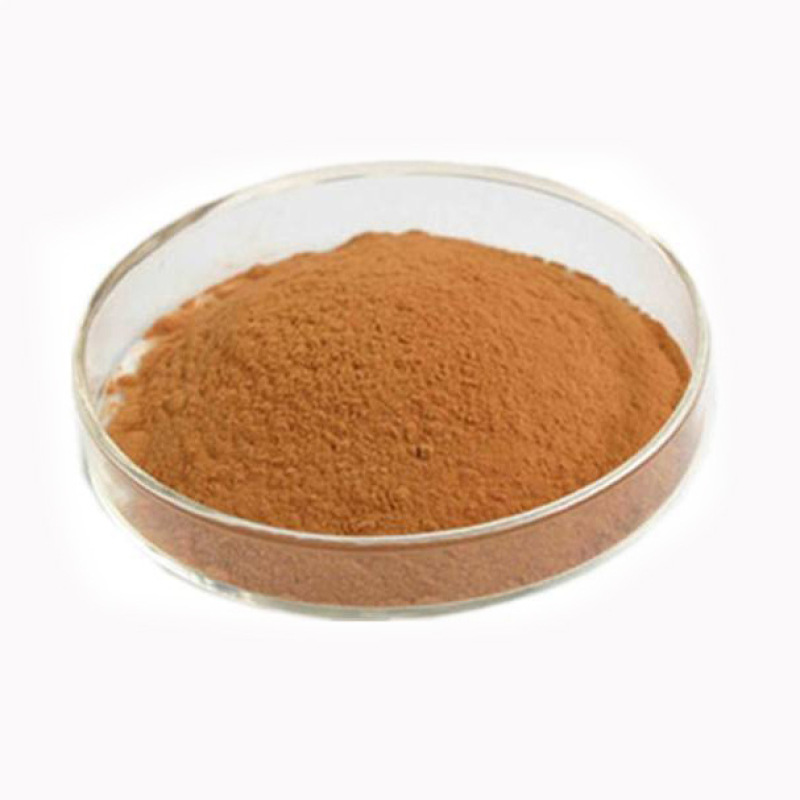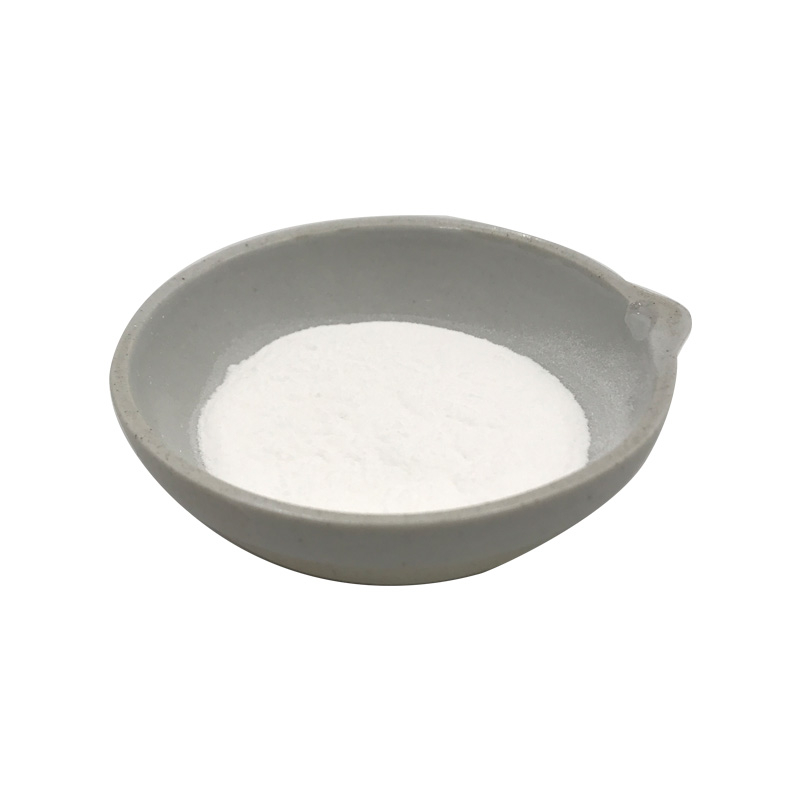4,4'-DIBROMO-2,2'-BIPYRIDINE Chemical PropertiesMelting point 138.0 to 142.0 °CBoiling point 362.9±37.0 °C(Predicted)density 1.809±0.06 g/cm3(Predicted)storage temp. Keep in dark place,Sealed in dry,Room Temperaturesolubility soluble in Tolueneform powder to crystalpka2.59±0.18(Predicted)color White to Light yellowInChIInChI=1S/C10H6Br2N2/c11-7-1-3-13-9(5-7)10-6-8(12)2-4-14-10/h1-6HInChIKeyKIIHBDSNVJRWFY-UHFFFAOYSA-NSMILESC1(C2=NC=CC(Br)=C2)=NC=CC(Br)=C1CAS DataBase Reference18511-71-2Safety InformationRisk Statements 36/37/38Safety Statements&nb
Contact Now
Products Description of 2,2-Dibromo-2-cyanoacetamide CAS#10222-01-2White crystals. Melting point 125℃, soluble in general organic solvents (such as acetone, benzene, dimethylformamide, ethanol, polyethylene glycol, etc.), slightly soluble in water (100g water dissolves 1.5g at 25℃). Its aqueous solution is relatively stable under acidic conditions and easily hydrolyzed under alkaline conditions. Increasing pH value, heating, ultraviolet light or fluorescent irradiation can greatly accelerate its dissolution rate.
Contact Now
Products Description of 2,2'-[(1-Methylethylidene)bis[(dibromo-4,1-phenylene)oxymethylene]]bis[oxirane]-4,4'-(1-methylethylidene)bis[2,6-dibromophenol] copolymer CAS#68928-70-1Tetrabromobisphenol A-tetrabromobisphenol A glycidyl ether copolymer is widely used in flame retardant potting materials, flame retardant laminate adhesives, etc.
Contact Now
Products Description of 4,4'-Diphenylmethane diisocyanate CAS#101-68-8Pale yellow molten solid with a strong pungent odor.
Contact Now
Products Description of 4,4'-Diamino-2,2'-Stilbenedisulfonic Acid CAS#81-11-8 4,4'-diaminostilbene-2,2'-disulfonic acid, an organic chemical substance, molecular formula: C14H14N2O6S2.4,4'-Diamino-2,2'-stilbenedisulfonic acid Chemical PropertiesMelting point 300 °Cdensity 1.4732 (rough estimate)vapor pressure 1.3hPa at 25℃refractive index 1.6510 (estimate)storage temp. Keep in dark place,Inert atmosphere,Room temperaturesolubility Aqueous Base (Slightly)pka-1.58±0.50(Predicted)form Crystalline Powdercolor Cream to yellow
Contact Now
Products Description of 4,4'-Diaminodiphenylsulfone CAS#80-08-0Dapsone is a sulfone antibacterial drug with a strong antibacterial effect on Mycobacterium leprae. Its preparations have been widely used in the treatment of leprosy. As the first choice for the treatment of leprosy, dapsone acts on the dihydrofolate synthase (DHPs) of bacteria, interferes with the synthesis of folic acid, and affects the synthesis of protein by bacteria.
Contact Now
Products Description of 2,2-Dimorpholinodiethylether CAS#6425-39-42,2-Dimorpholinyl diethyl ether is a transparent liquid.2,2-Dimorpholinodiethylether Chemical PropertiesMelting point -28 °CBoiling point 309 °C (lit.)density 1.06 g/mL at 25 °C (lit.)vapor pressure 66Pa at 20℃refractive index n20/D 1.484(lit.)Fp 295 °Fstorage temp. 2-8°Csolubility Chloroform (Slightly), Ethyl Acetate (Slightly)form Oilpka6.92±0.10(Predicted)color Pale Brown to Light BrownWater Solubility 100g/L at 20℃InChIKeyZMSQJSMSLXVTKN-UHFFFAOYSA-NLogP0.5
Contact Now
Products Description of 2,2-Dimethylthiazolidine CAS#19351-18-92,2-Dimethylthiazolidine, an organic chemical substance, molecular formula: C5H11NS.2,2-Dimethylthiazolidine Chemical PropertiesBoiling point 61 °C / 15mmHgdensity 1,02 g/cm3vapor pressure 2.01hPa at 25℃refractive index 1.5100-1.5140Fp 55°Cstorage temp. 2-8°C(protect from light)pka8.97±0.40(Predicted)form clear liquidcolor Colorless to Light orange to YellowInChIInChI=1S/C5H11NS/c1-5(2)6-3-4-7-5/h6H,3-4H2,1-2H3InChIKeySNPQRYOQWLOTFA-UHFFFAOYSA-NSMILESS1CCNC1(C)CLogP1.38CAS DataBase Refer
Contact Now
Products Description of Propargylamine CAS#2450-71-7Propargylamine is a colorless or light yellow liquid at room temperature and pressure. The solubility of propargylamine in water is relatively low, but its solubility in common organic solvents such as ethanol, acetone, dimethylformamide and ether is high.
Contact Now
Products Description of 2,2'-Azobis(2-methylpropionitrile) CAS#78-67-1White columnar crystals or white powdery crystals.
Contact Now
Products Description of diisooctyl 2,2'-[(dioctylstannylene)bis(thio)]diacetateCAS#26401-97-8Mainly used in PVC products that come into contact with food and medicine, such as plates, sheets, films, etc., and can be used in processes such as calendering, blow molding, extrusion, injection, etc.diisooctyl 2,2'-[(dioctylstannylene)bis(thio)]diacetate Chemical Propertiesdensity 1.08[at 20℃]vapor pressure 0Pa at 25℃storage temp. Refrigerator, under inert atmospheresolubility Chloroform (Slightly), Ethyl Acetate (Slightly)form Oilcolor ColourlessWater Solu
Contact Now
Products Description of 2,2'-BITHIOPHENE CAS#492-97-72,2'-BITHIOPHENE is an organic intermediate.2,2'-BITHIOPHENE CAS#492-97-7 Chemical PropertiesMelting point 32-33 °C (lit.)Boiling point 260 °C (lit.)density 1.2455 (rough estimate)refractive index 1.6210 (estimate)Fp >230 °Fstorage temp. Keep in dark place,Inert atmosphere,Room temperatureform powder to lump to clear liquidcolor White or Colorless to Light yellow to GreenWater Solubility Insoluble in water.Sensitive Light SensitiveBRN 3039InChIKeyOHZAHWOAMVVGEL-U
Contact Now
Products Description of 2-Hydroxynicotinic acid CAS#609-71-22-Hydroxynicotinic acid is an organic intermediate.
Contact Now
Products Description of Cetrimide CAS#8044-71-1Cetrimonium bromide is in the form of white or light yellow crystals or powder, easily soluble in isopropyl alcohol and water, produces a large amount of foam when shaken, has good compatibility with cationic, nonionic and amphoteric surfactants, and has excellent penetration, softening, emulsification, antistatic, biodegradability and bactericidal properties.Ctrimide Chemical PropertiesMelting point 245-250 °C(lit.)solubility H2O: 10 % (w/v)CAS DataBase Reference8044-71-1(CAS DataBase Reference)Safety InformationHazard Co
Contact Now
Products Description of Cetrimide CAS#8044-71-1Cetrimonium bromide is in the form of white or light yellow crystals or powder, easily soluble in isopropyl alcohol and water, produces a large amount of foam when shaken, has good compatibility with cationic, nonionic and amphoteric surfactants, and has excellent penetration, softening, emulsification, antistatic, biodegradability and bactericidal properties.Cetrimide Chemical PropertiesMelting point 245-250 °C(lit.)solubility H2O: 10 % (w/v)CAS DataBase Reference8044-71-1(CAS DataBase Reference)Safety InformationHazard C
Contact Now
Products Description of Diammonium 2,2'-azino-bis(3-ethylbenzothiazoline-6-sulfonate)CAS#30931-67-0ABTS diammonium salt is a substrate for horseradish peroxidase (HRP).Diammonium 2,2'-azino-bis(3-ethylbenzothiazoline-6-sulfonate) Chemical PropertiesMelting point >181oC (dec.)storage temp. 2-8°Csolubility H2O: 50 mg/mL, very slightly hazy, greenform tabletcolor Pale Green to Light GreenPHpH(50g/l, 25℃) : 5.0~6.0Water Solubility Dissolve in water at 50mg/ml.
Contact Now
Products Description of 2,2-Dimethyl-1,3-dioxolane-4-methanol CAS#100-79-8(+,-)-2,2-Dimethyl-4-hydroxy-1,3-dioxane is a chemical.2,2-Dimethyl-1,3-dioxolane-4-methanol Chemical PropertiesMelting point -27℃Boiling point 189-191 °Cdensity 1.066 g/mL at 20 °C(lit.)vapor pressure 34Pa at 20℃refractive index n20/D 1.434Fp 176 °Fstorage temp. Sealed in dry,2-8°Csolubility 172g/l solubleform Liquidpka14.20±0.10(Predicted)color Clear colorlessPH4.0-7.5 (H2O)Water Solubility miscibleMerck 14,5213Safety Informa
Contact Now
Products Description of Optical brightener OB-1 CAS#1533-45-5Fluorescent whitening agent OB-1, 2,2-(4,4-diphenylethylene) bisbenzoxazole, is a yellow crystalline substance with a melting point of 359-362℃, insoluble in water, odorless, stable performance, and a maximum absorption spectrum wavelength of 374nm. It has strong fluorescence and a fluorescence emission wavelength of 434nm.
Contact Now
Products Description of 2-Amino-5-bromopyrazine CAS#59489-71-32-Amino-5-bromopyrazine is a compound that can be used in organic synthesis.2-Amino-5-bromopyrazine Chemical PropertiesMelting point 113-117 °C (lit.)Boiling point 274.2±35.0 °C(Predicted)density 1.844±0.06 g/cm3(Predicted)storage temp. Keep in dark place,Sealed in dry,Room Temperaturesolubility Ethanol, Ethyl Acetate, Methanolform Brown Needlespka1.66±0.10(Predicted)color Light yellow to BrownInChIKeyKRRTXVSBTPCDOS-UHFFFAOYSA-NCAS DataBase Reference59489-71-3(CAS DataBase Reference)Safety Inf
Contact Now
Products Description of 1-Bromoisoquinoline CAS#1532-71-41-Bromoisoquinoline is a low melting point solid.CAS No.
Contact Now
Products Description of 2-Aminothiazole-4-acetic acid CAS#29676-71-9 It is prepared by condensing ethyl chloro or bromoacetyl acetate with thiourea and then hydrolyzing it.2-Aminothiazole-4-acetic acid Chemical PropertiesMelting point 130 °C (dec.)(lit.)Boiling point 399.0±17.0 °C(Predicted)density 1.367 (estimate)vapor pressure 1.03-1.15hPa at 20℃refractive index 1.6430 (estimate)storage temp. -20°Csolubility DMSO (Slightly)pka3.20±0.10(Predicted)form solidcolor WhiteWater Solubility 6.5 g/L (20 ºC)BRN 127415Stability:Unsta
Contact Now
Cyclohexanol, 4,4-(1-methylethylidene)bis-, polymer with (chloromethyl)oxirane CAS#30583-72-3Hydrogenated bisphenol A epoxy resin is mainly used in insulating materials.Cyclohexanol, 4,4-(1-methylethylidene)bis-, polymer with (chloromethyl)oxirane Chemical Propertiesdensity 1.135[at 20℃]vapor pressure 0.002Pa at 20℃Water Solubility 58.6mg/L at 30℃InChIInChI=1S/C15H28O2.C3H5ClO/c1-15(2,11-3-7-13(16)8-4-11)12-5-9-14(17)10-6-12;4-1-3-2-5-3/h11-14,16-17H,3-10H2,1-2H3;3H,1-2H2InChIKeyCSSRVVKVKAJYLJ-UHFFFAOYSA-NSMILESC(C1CCC(O)CC1)(C1CCC(O)CC1)(C)C.C(C1OC1)ClLogP3.84 at 20℃EPA Substan
Contact Now
Products Description of Terbinafine CAS#91161-71-6 Terbinafine hydrochloride can treat skin, hair and nail infections caused by Trichophyton, Microsporum canis and Epidermophyton floccosum. It can also treat various tinea, skin yeast infections caused by Candida, and onychomycosis caused by mold.
Contact Now
Products Description of Spermine CAS#71-44-3 Spermine is a polyamine substance containing two amino groups and two imino groups. It is produced in the body by putrescine (butanediamine) and S-adenosylmethionine catalyzed by various enzymes. It and spermidine are both present in bacteria and most animal cells and are important substances that promote cell proliferation. Under acidic conditions, it exhibits the characteristics of polycationic polyamines and can bind to DNA in viruses and bacteria.
Contact Now




![2,2'-[(1-Methylethylidene)bis[(dibromo-4,1-phenylene)oxymethylene]]bis[oxirane]-4,4'-(1-methylethylidene)bis[2,6-dibromophenol] copolymer CAS#68928-70-1](https://sdluxicdn.huazhi.cloud/cdn/ff/4aHmJfFwYpEABMbnR7HTG1yocAzE1PHApY-zrZ-DCjo/1717752361/public/styles/chanpinzhutu/public/2024-06/%E6%97%A0%E8%89%B2%E6%B6%B2%E4%BD%93%20%283%29%20-%20%E5%89%AF%E6%9C%AC_5.jpg?itok=G1rPjRBd)

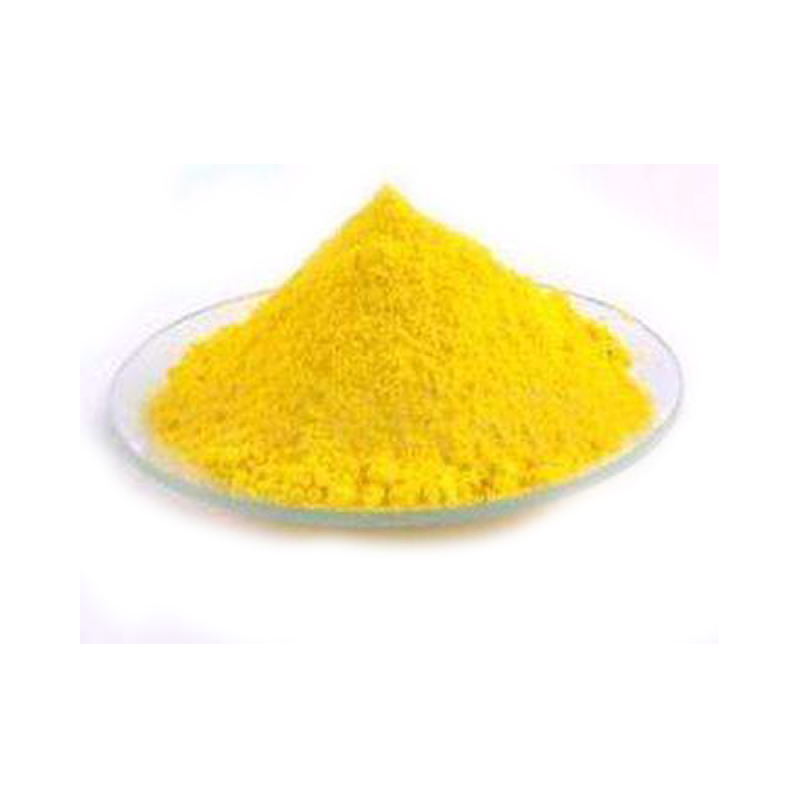



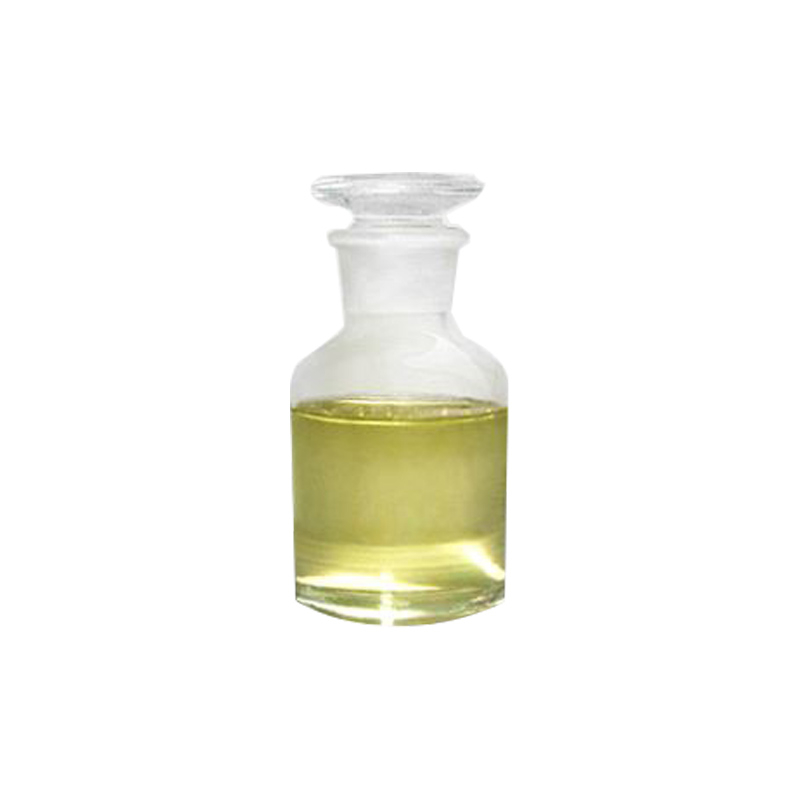

![diisooctyl 2,2'-[(dioctylstannylene)bis(thio)]diacetateCAS#26401-97-8](https://sdluxicdn.huazhi.cloud/cdn/ff/MEIXbra4wyUKJKW67w9UkqzwQzIZQBAtmtXt1eQRqFc/1718820022/public/styles/chanpinzhutu/public/2024-06/%E6%97%A0%E8%89%B2%E6%B6%B2%E4%BD%93%20%283%29%20-%20%E5%89%AF%E6%9C%AC_41.jpg?itok=btFpy9ph)




